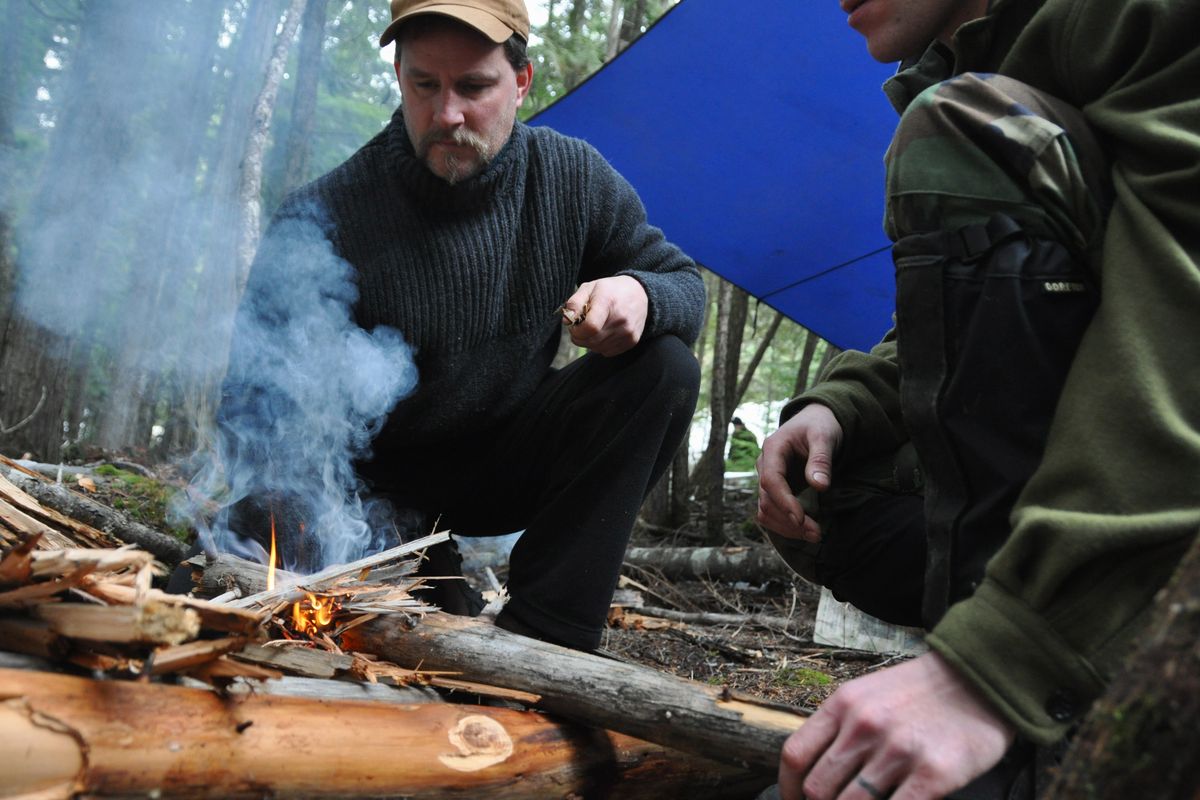Building a fire in wet conditions

Ten sure-fire steps to building a fire in conditions that many would consider hopeless.
- Select a site out of the wind, away from snow-loaded tree limbs, that suits your purpose, whether it’s to provide warmth for a shelter, for signaling or for both.
- Create a dry environment (perhaps a tarp lean-to) or find some way to shelter you, your fire and the fire fuel from precipitation. A shelter also will hold some of the heat from a fire built at the entrance.
- Gather fuel of different sizes. Standing dead limbs and timber will be drier than wood off the ground.
- Prepare the fuel using a knife or hatchet to split and expose dry wood. Make large piles –“three times more than you think you need,” Survival School instructors say – of pencil-size kindling and sticks the size of a thumb, plus piles of larger fuels.
- Make “feather sticks” by forcing a knife down the dry sharp edge of a split length of wood to shave five long curly wisps of wood that are left attached at the base to resemble a hat feather plume. A feather stick made from pitch wood burns especially well.
- A stable platform should be laid to keep the fire off wet ground or from sinking into snow. The base should be about 15-by-15 inches, made from, say, four 4-inch diameter chunks of wood or logs.
- A cross-piece of wood about 3 inches in diameter should be set across the platform to provide a wind break for the tinder as well as a lift that allows air flow under the kindling when it is stacked over the tinder flames.
- Pile the tinder on the platform against the cross piece; have the feather sticks next to the tinder and all the other sizes of kindling and fuel within easy reach.
- Ignite the tinder with a match, lighter, magnesium tool or other source and quickly hold a feather stick over the flame, blowing gently with your mouth as necessary until it’s burning.
- Add fuels gradually, starting with more feather sticks, then pencil-size kindling and then thumb-size kindling in a cross-hatch pattern to allow good air flow. Build a good base of burning wood before adding larger fuels.